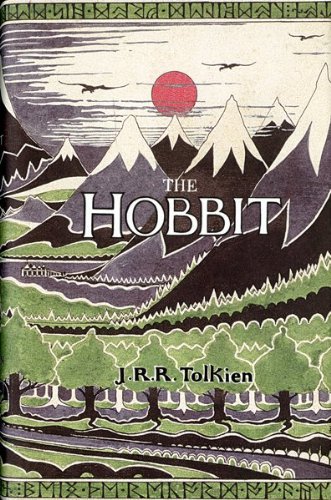All Nonfiction
- Bullying
- Books
- Academic
- Author Interviews
- Celebrity interviews
- College Articles
- College Essays
- Educator of the Year
- Heroes
- Interviews
- Memoir
- Personal Experience
- Sports
- Travel & Culture
All Opinions
- Bullying
- Current Events / Politics
- Discrimination
- Drugs / Alcohol / Smoking
- Entertainment / Celebrities
- Environment
- Love / Relationships
- Movies / Music / TV
- Pop Culture / Trends
- School / College
- Social Issues / Civics
- Spirituality / Religion
- Sports / Hobbies
All Hot Topics
- Bullying
- Community Service
- Environment
- Health
- Letters to the Editor
- Pride & Prejudice
- What Matters
- Back
Summer Guide
- Program Links
- Program Reviews
- Back
College Guide
- College Links
- College Reviews
- College Essays
- College Articles
- Back
The Hobbit by J.R.R. Tolkien
Although The Hobbit, which is now over eighty years old, may seem like a boring old fantasy tale, it proves to be far more than that. Written by the “grandfather of fantasy”, J.R.R. Tolkien, it naturally has all the usual aspects of a fantasy: a good vs. evil plot, different imaginary creatures, mythology, a reluctant hero, etc. However, beyond these points, deep at its center, this book has a heart that makes it stand out from countless other fantasy stories. Instead of spinning out a long dry saga, it brings its legend to life, making the ancient tale seem almost modern and drawing readers to its pages.
Most of the time a fantasy book tends to be read predominantly by only one age category. The Hobbit is one of the few exceptions. Written for pre-teens, it doesn’t have a sophisticated vocabulary or complicated thought. In fact, Tolkien first wrote the novel simply as a story to entertain his young children. Yet when it was published, the tale became swiftly picked up by both children and teens alike. It continues to hold its popularity even now.
The book starts out with Bilbo Baggins, the hobbit protagonist, living a peaceful life in his nice comfy hobbit hole (a house dug straight into the side of a hill), not expecting nor wanting to go “off into the Blue for mad adventures.” Bilbo has hidden potential inside of him like every other fantasy hero, just waiting for a way to come out. The queer thing about him, though, is that he is fifty years old and already settled down in life. How does he become the protagonist of a children’s novel?
Readers will soon find out that, in spite of being aged, Bilbo still is very childlike. When the old, wise wizard Gandalf and a group of dwarves show up at his door, asking him to come and help them recover a long lost treasure, it’s this childlike, curious and ambitious nature that finally drives him to go questing. So off he goes, assigned as the “professional” treasure hunter of the group, not knowing what awaits him. As you might expect, many obstacles befall Bilbo and the group on their journey, almost right from the time they step out from Bilbo’s comfortable home in the hobbit-lands. All throughout the story the childish and adult parts of Bilbo’s character fight within him, with each new obstacle fueling the conflict. The outcome of the story ultimately relies on whether Bilbo can or cannot overcome his inner struggle and become a true hero.
The Hobbit isn’t so short of a story, but it can be read pretty quickly. It’s fast paced and entertaining, nonetheless it still manages to describe everything thoroughly and clearly. The third-person narrative of the story is generally lighthearted and sounds almost as though the narrator was telling it directly to a group of people, which has an unusually pleasing effect for me. However, this does not mean that the sentence structure and flow is simplified. On the contrary, the novel is so well written that you will feel as if you are there in the adventure with Bilbo and the rest of the company. The plot moves quickly from lighthearted to gloomy, from scary to joyful, keeping the reader in constant suspense.
All this makes The Hobbit a great fantasy to read. It has been nominated for the Carnegie Medal and awarded a prize for best juvenile fiction from the New York Herald Tribune. It will entertain you all throughout and be hard to put down. Tolkien has experienced adventure and danger firsthand, serving on the battlefield during WW1, and he writes this masterpiece with both experience and imagination. This novel is rightfully an example for all of today’s fantasy, being hard to surpass. If you pick it up and read it you will see what I mean.
Similar Articles
JOIN THE DISCUSSION
This article has 0 comments.

